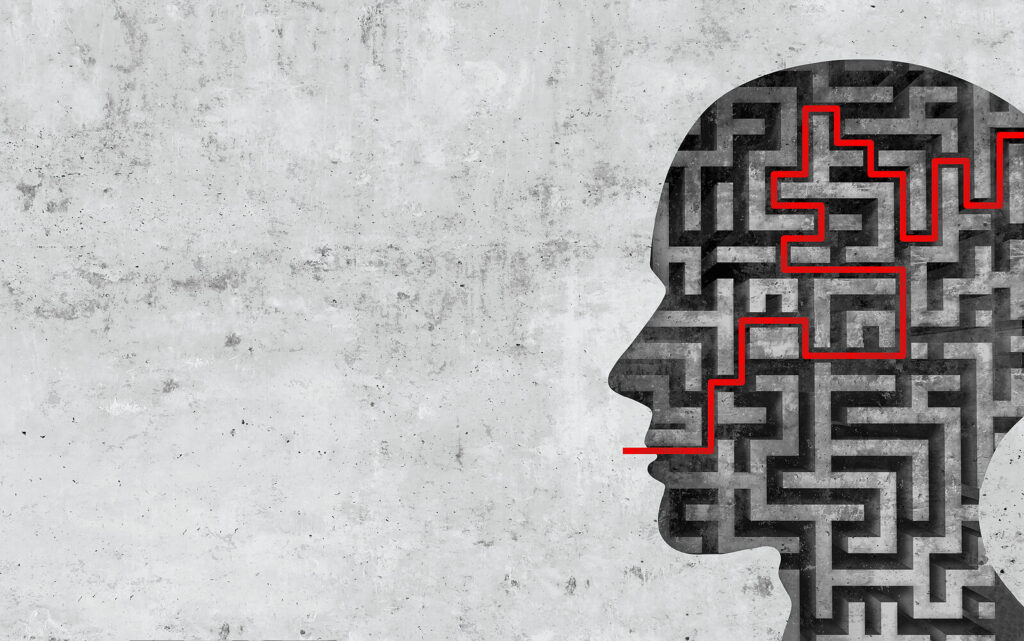
Mindfully Present Or On Auto-Pilot?
As we move through our lives we spend a lot of time in our thoughts, and often we feel detached from our bodies. Western culture encourages, maybe even requires, this! We are so focused on productivity that we don’t have time to feel. That’s why understanding your feelings in therapy matters so much. Both with cognitive therapy and somatic therapy. A top-down and bottom-up approach is necessary to be mindful, rather than on autopilot.
It’s hard to keep up such a pace if we are actually aware of our body sensations. This is especially true when we have experienced trauma, even if it was long ago. Early on when our capacity to cope feels overwhelming, we disconnect from our conscious awareness. This happens using dissociation to help us survive a situation that has taken over our nervous system’s ability to stay regulated
Many trauma survivors seek trauma therapy but it can be difficult to know what to look for in a trauma therapist. One important question to ask is what type of therapy methods they use: top-down or bottom-up? Or both top-down and bottom-up approaches?
We have two ways of processing information: a top-down and bottom-up approach. Trauma therapists can use different therapy methods. This depends on their training and their perspective on trauma therapy. Some use methods that are cognitive and others use methods that are somatic. Both types of therapy can be effective depending on the type of trauma present.

What is “Top-Down Processing?”
Top-Down processing is our most highly developed way of processing information: using cognition (thinking), which takes place in the prefrontal cortex of the brain.
In top-down processing, the prefrontal cortex uses current and past information to interpret a situation and direct the body on what to do next. The brain uses logic, planning, and problem-solving to make conscious decisions about what to do next, how to interpret something.
Most mental health treatment in the United States today is based on top-down, cognitive-based approaches. These methods rely on an individual’s ability to become conscious of their thoughts and then work to change those thoughts. One of the most well-known examples is Cognitive Behavioral Therapy (CBT). According to the Mayo Clinic, “CBT helps you become aware of inaccurate or negative thinking so you can view challenging situations more clearly and respond to them in a more effective way.”

What Are Some Examples of Top-Down Therapy Approaches for Trauma?
- Cognitive-Behavioral Therapy (CBT), including Trauma-Focused CBT (TF-CBT)
- Dialectical Behavior Therapy (DBT)
- Cognitive Processing Therapy (CPT)
- Prolonged Exposure Therapy (PE)
- Psychoanalysis
- Solution-Focused Brief Therapy (SFBT)
- Psychodynamic Therapy
- and many more.
So top-down approaches help us change our negative thoughts or beliefs about ourselves so that we can stop being limited by them. Sounds pretty good. If you are anxious, just tell yourself there is really nothing to be afraid of and that you are safe.
However, it is not always that simple
But what if someone can’t change their thoughts? What if they try not to think about it, but they have a deep belief that they are unlovable that fills them with shame? Or what if a person is able to change their thoughts, but they have frequent panic attacks that won’t go away?
Unfortunately, many people feel there is something wrong with them when CBT or other top-down approaches do not help. If this is your experience, there isn’t anything wrong with you. The therapy methods you’re trying are unable to access the trauma hidden in your unconscious. Often, pre-verbal trauma, birth trauma, and traumatic experiences that happened while asleep or unconscious are inaccessible in cognitive methods.
Limitations of Using Top-Down Approaches in Trauma Therapy
Many people have found CBT, or other top-down treatment approaches to be immensely helpful in treating their anxiety or depressive symptoms. Unfortunately for many people who experienced trauma in childhood, top-down approaches alone are often inadequate to relieve their symptoms. This makes sense given the context of how trauma affects our minds and bodies.
Trauma responses happen before our prefrontal cortex can even register what’s happening.
By the time an intrusive thought pops into your head, it is often too late to avoid what is happening. In fact, your body has already sent the signal that you are unsafe.
Where Do Trauma Responses Begin?
The limbic brain is where our trauma responses originate. This part of the brain is the earliest part of our brains to develop, and instinctive responses to threats. This means that Fight, Flight, Freeze, and Submit kick in before our cognitive brain really understands what is happening. When trauma symptoms are activated, we often feel extreme anxiety or overwhelmed with sadness or anger. Or we may feel overwhelming body sensations like nausea, headaches, muscle tension or pain, racing heartbeat, and many other physical symptoms.
Oftentimes we are unaware of what has reminded us of the past traumatic experience, especially if we are typically disconnected from our bodies.
According to Robyn Brickel, MA, LMFT, a trauma-informed therapist practicing in Virginia who uses bottom-up psychotherapy approaches, “Trauma survivors – they’re living so much of their life in the bottom part of their brain… with the amygdala, the smoke alarm of the brain, shooting off [signals of] ‘danger, danger, danger,’ that they can’t access that top part to be able to start there.”
in his bestselling 2014 book, The Body Keeps the Score, Psychiatrist Bessel van der Kolk explains, “trauma interferes with the proper functioning of brain areas that manage interpret experience. A robust sense of self – one that allows a person to state confidently, ‘this is what I think and feel’ and ‘this is what is going on with me’- depends on a healthy and dynamic interplay among these areas.”
This is where Bottom-up approaches in trauma therapy, informed by bottom-up processing, come into play.
What is “Bottom- Up Processing?”
Bottom-up processes are those that are initiated by the sensations and movements of the body.
In bottom-up processing, the input of sensory information is coming in from the external environment. Our sensory receptors in turn let the brain know whether we are safe. These processes occur without us even being conscious of them. In other words, the prefrontal cortex is not involved.
Bottom-up psychotherapy methods use the wisdom of the body’s sensations and movements to access the trauma that is held in our fascia or connective tissue. We do not have to have conscious memory of traumatic experiences to process and heal trauma using bottom-up therapy approaches.
What Are Some Examples Of Bottom-Up Approaches for Trauma?

- Yoga therapy
- Somatic Experiencing
- Eye Movement Desensitization Reprocessing (EMDR)
- Sensorimotor Psychotherapy
- Brainspotting
- Focusing
- Accelerated Experiential Dynamic Psychotherapy (AEDP)
- Hakomi Method
- Art Therapy
- Drama Therapy
- Dance/Movement Therapy
- Play Therapy
- Sand Tray Therapy
- Equine-Assisted Psychotherapy
- and many others.
The Need for Bottom-Up Approaches in Trauma Therapy
Since trauma responses are automatic and unconscious, top-down approaches to treatment are helpful. They rely on our ability to perceive with our conscious mind. This is helpful when we are unable to address the cascade of events that leave us feeling anxious, depressed, or unsafe. When a person is experiencing trauma, their prefrontal cortex actually goes offline. Thus, that the body can conserve energy for fight or flight, and we can survive.
This means that it’s the body – not the brain – where trauma is present. And, it is the body – not the brain – which initiates trauma responses. If you haven’t had success with trauma therapy that was cognitively based, you might want to look into some of the bottom-up approaches.
Final Thoughts About Top-Down and Bottom-Up Approaches
There is no one-size-fits-all method of healing trauma. We are all different people. So, we all have our own comfort level with various therapeutic styles and methods. It’s important to find the trauma therapist that you click with. One in whose presence you feel safe and understood. Knowing the various types of trauma therapy approaches and how they work is a great place to start beginning your trauma healing journey.
Listen to Therapy Chat Podcast Episode 294 for more of the conversation with Robyn Brickel, MA, LMFT about top-down and bottom-up trauma therapy approaches.
In Episode 299 of Therapy Chat Podcast, two previous interviews with trauma therapist Lisa Ferentz, LCSW-C were put together in a replay episode in which Lisa and host Laura Reagan, LCSW-C talk about how trauma is held in the body and why bottom-up therapy methods are helpful. Listen here.
Bessel van der Kolk’s book, The Body Keeps The Score: Brain, Mind, and Body In The Healing Of Trauma https://www.besselvanderkolk.com/resources/the-body-keeps-the-score
Mayo Clinic article on CBT: https://www.mayoclinic.org/tests-procedures/cognitive-behavioral-therapy/about/pac-20384610
Find a Trauma Therapist in Our Directory
If you’re ready to find the trauma therapist that is going to help you have a breakthrough then check out our online therapy directory. Know that we are regularly adding therapists to our directory. Therefore, the list will only continue to grow. To get started follow these steps:
- Head to our find a therapist page.
- Begin looking for a therapist in your area and select one that is a good fit.
- Visit their website and learn about our therapists.
- Get in touch and begin finding hope and healing!
*If you’re a trauma therapist who offers a top-down and bottom-up approach our directory is for you. If you’re looking to be a resource for individuals needing help, learn about our directory. Then, visit our page to get set up as a therapist today!




